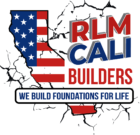What Elements Make Up the Basement Waterproofing Process?
When you make the investment to waterproof your basement, you are creating a safe and dry space that can be put to a wide range of uses thanks to your hard work. You have finally arrived at the conclusion that finishing the basement is the most effective approach for you to make the most of the additional space that is available on your property.
Drainage on the Interior Water that seeps into your home through sweating walls or leaking joint coves can be collected by interior drainage systems like the AquaStop BasementGutterTM. These systems also prevent mold growth. This system is situated on the internal perimeter of your basement; the basement gutter collects water when there is heavy rainfall, and then redirects it to your sump pump, where it is drained far away from your home.
Sump Pump. If the water table in your basement rises to an unsafe level, a sump pump, which is part of a water drainage system, will pump the water out of your basement. When it rains heavily, the water will collect in a basin that will be constructed in your basement by trained professionals. When the water level in the basin reaches a specific point, the pump will begin to remove all of the water and direct it away from your house. This helps regulate the levels of moisture surrounding your foundation, which will avoid leaking or floods to some extent.
Vapor Barrier. In addition to assisting in temperature management and preventing excess moisture and humidity from entering your basement, installing a vapor barrier can help prevent mold growth and reduce the amount of money you spend on utility bills. In addition, a vapor barrier can make it more challenging for insects and other pests to enter your basement. Roaches and rats are examples of pests that not only produce unpleasant odors but also contribute to an unpleasant atmosphere.
Windows that open outwards and window wells. In order to ensure the inhabitants’ safety, egress windows are typically necessary for basements. Egress windows have the potential to be the source of leaks in the basement during periods of severe rainfall if they are not correctly drained or if they are not placed correctly. That is where egress wells, also known as window wells, come into play. Window wells consist of a carved-out space surrounding your egress window with drainage stones that can help manage moisture and water flow around the window to prevent leaking or flooding. Window wells are an essential part of any home that has an egress window.
Dehumidifier. Appliances known as dehumidifiers are typically installed in crawl areas or basements so that the relative humidity of indoor rooms can be controlled. They also have the ability to clean the air in the area, which is especially useful in basements, which often smell musty due to a lack of ventilation. Mold produces a hazardous atmosphere not only on the lower floors of your home but all around. Dehumidifiers help in preventing the creation or spread of mold in your basement, which helps prevent mold from creating a toxic environment.
Beginning with waterproofing will ensure that your basement is finished in the correct manner the first time around. Get in touch with us right now to schedule a no-obligation consultation and receive a free estimate on the cost of our services. Our trained basement specialists will do an Foundation Inspection Near Me Encino of your property and collaborate with you to identify the options that will work best with your house and the way you live. It is not difficult to get started. Dial (800) 824-6699 to reach the RLM Retrofit Foundation right away.
Prepare Your Seniors for the Summer Storms with These Easy Steps Encino










